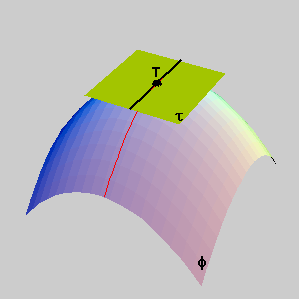 Figure 1
Figure 1
Figure 2
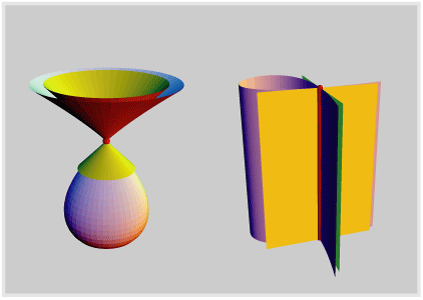
|
The Gaussian and mean curvatures at the regular points of a surface are the terms of the differential geometry. For future structural engineers it is important to have knowledge of these functions.
EXAMPLE Tensile fabric structure (e.g. membrane roof) in a uniform state of tensile prestress behaves like a soap film stretched over a wire which is bent in a shape of a closed space curve. Soap film assumes a form which has the minimal area relative to all other surfaces stretched over the same wire; this surface is therefore called minimal surface. It can be shown that mean curvature vanishes at each point of that surface. 1.1 Regular and singular points of a surface
The Gaussian and mean curvatures are NOT defined at singular points. |
|
|
|
|
1.2 Normal curvature, principal and asymptotic directions You have already learned that: The absolute value of the curvature k of a plane curve at its regular point T is equal to the curvature of its osculating circle. The sign of k depends on the orientation of the normal line at T. (Figure 3) 
|
|
Kt=kt cosq, or r = R cosq. (Meusnier's theorem - Figure 4) 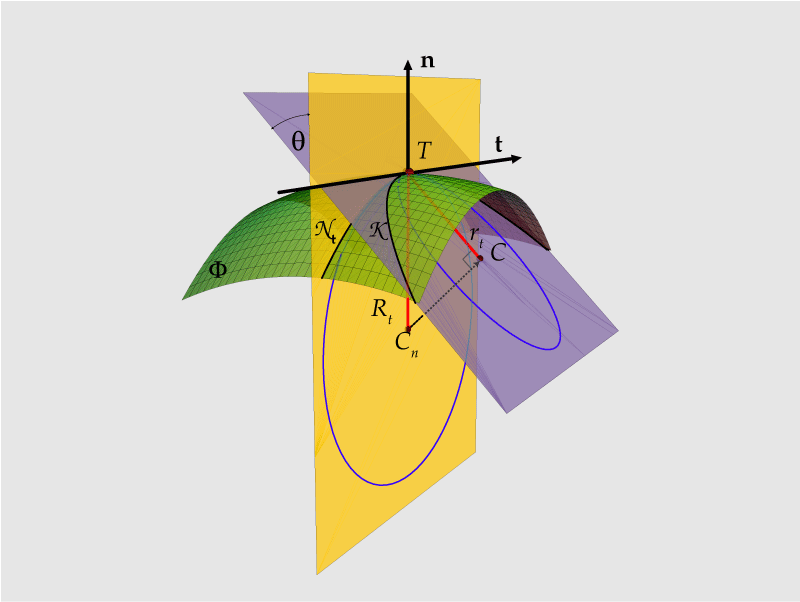
|
|
|
|
|
|
Kt=K1 cos2 j+K2 sin2 j, where j is the angle between t and p1. (Figure 6)
|
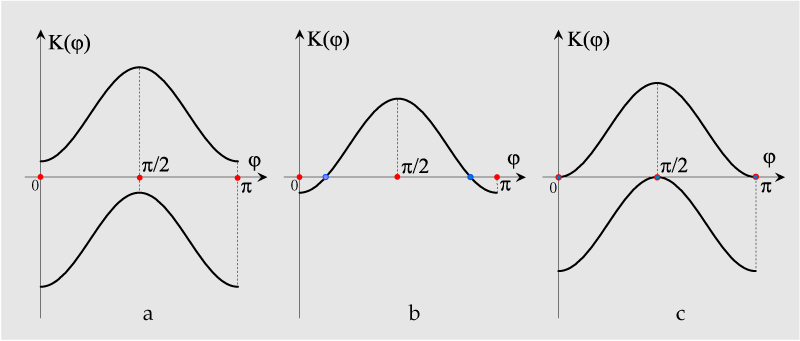
Figure 7 |
|
The asymptotic directions correspond to the roots of the quadratic equation K1 cos2j +K2 sin2 j=0. |
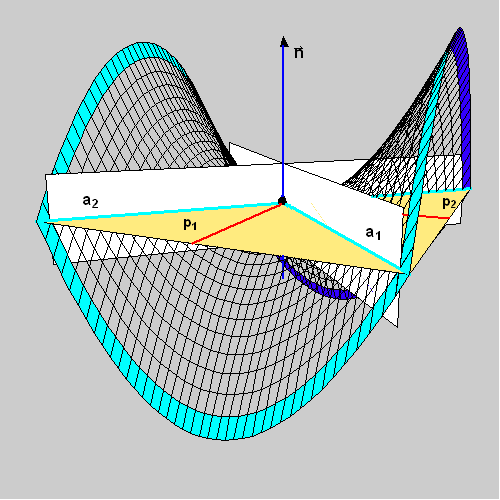
Figure 8 |
|
1.3 Gaussian and mean curvatures The Gaussian curvature G of a surface F at its regular point T is related to the principal curvatures in T by the formula: G(T) = K1(T) K2(T). The mean curvature H of a surface F at its regular point T is related to the principal curvatures in T by the formula: H(T) = ½ (K1(T) + K2(T)). |